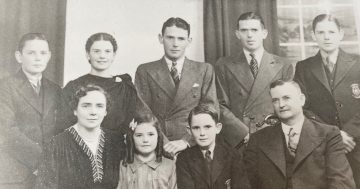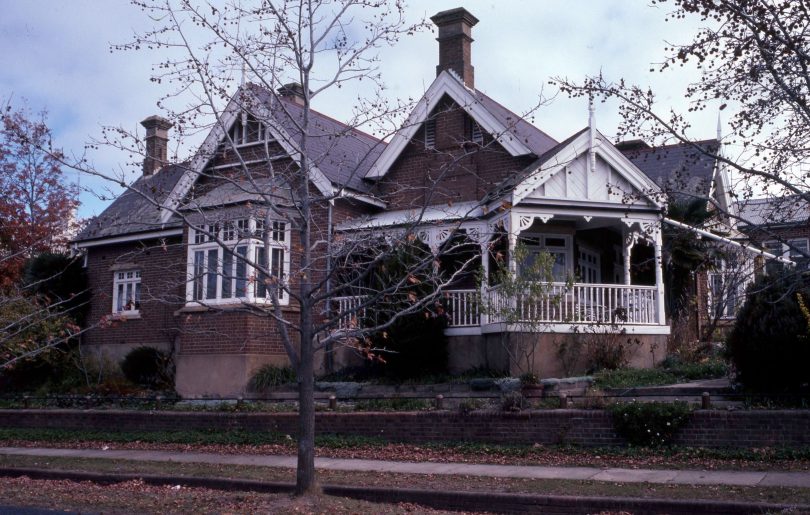
This home at 44 Montague Street in Goulburn was built in 1891 and photographed in 1982. Photo: David Flannery.
Pretentious. Stubbornly British. Solid, yet ornate. In their day, they might have been what we call today ‘trophy homes’. Goulburn’s early captains of industry worked feverishly until they could splash out and build one of these grand homes. The most successful among the entrepreneurs headed to what was known as Church Hill, which looks over Goulburn and beyond in every direction.
Bankers, millers, medicos, magistrates, ministers, hoteliers and retailers sought homes much like the ones they knew in the mother country, England, with airy drawing rooms, lavish dining rooms, stables and a place for their horse-drawn carriages.
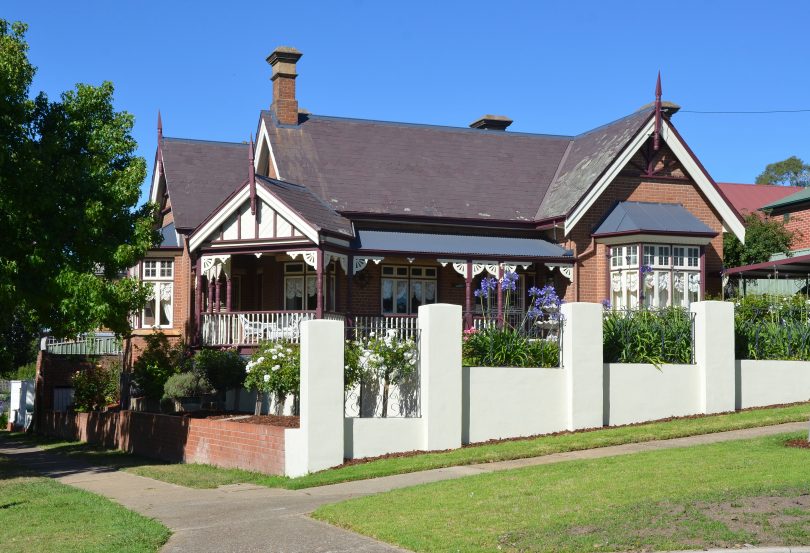
The home at 44 Montague Street in Goulburn today. Photo: Leon Oberg.
While the homes’ builders differed, their choice of designer was the same: Edmund Cooper Manfred. Every house except for one on the hill – on Cowper Street, between Verner Street and Montague Street – are Manfred-designed homes. Generations of accomplished people continued acquiring homes on the hill and in the neighbourhoods of Montague, Cowper, Bradley, Faithfull, Beppo and Hurst streets until well after the post-World War II boom.
Manfred was much like the other young arrivals from London, eager to cash in on Goulburn’s early prosperity from wool, wheat and gold rushes. An architect and surveyor, Manfred was a meticulous keeper of records. During the years, a picture emerged of Goulburn’s commercial and civil landscape from the building costs of these ostentatious homes, as well as their builders, subcontractors, buyers and their occupations. Manfred’s hand-drawn elevations, floor plans and specifications were retained and safely stowed for future reference.
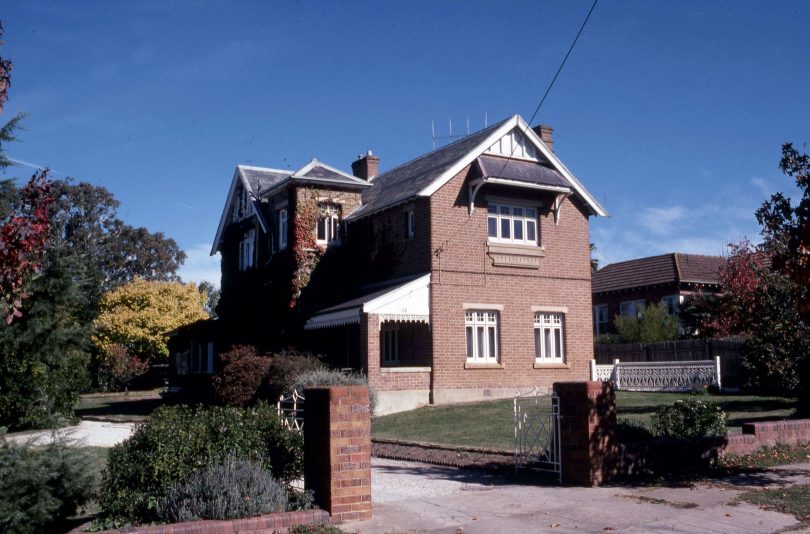
This home at 12 Hurst Street in Goulburn was built in 1890, and photographed in 1982. Photo: David Flannery.
Long after their owners died and their businesses ran their course, the homes continue to excite curiosity. Having withstood 120 to 150 years of booms and busts, as well as weather, neglect, indulgence and restoration, they lost their pretentiousness.
They have become character homes that calm their occupants and passers-by with quiet reassurance that, coupled with Manfred’s civic buildings – the ones that remain intact – are Goulburn’s defining quality.
When Goulburn fell on lean times, many of these mansions become too much for one family to own and maintain. They were divided into two homes, or had a large piece of land sliced off for subdivision. Up until its recent restoration and renovation, 114 Bradley Street came on the market without a bathroom, kitchen or toilet. But the picture windows, bones of the home, design and Manfred name were more than enough to stir inspections from prospective buyers.
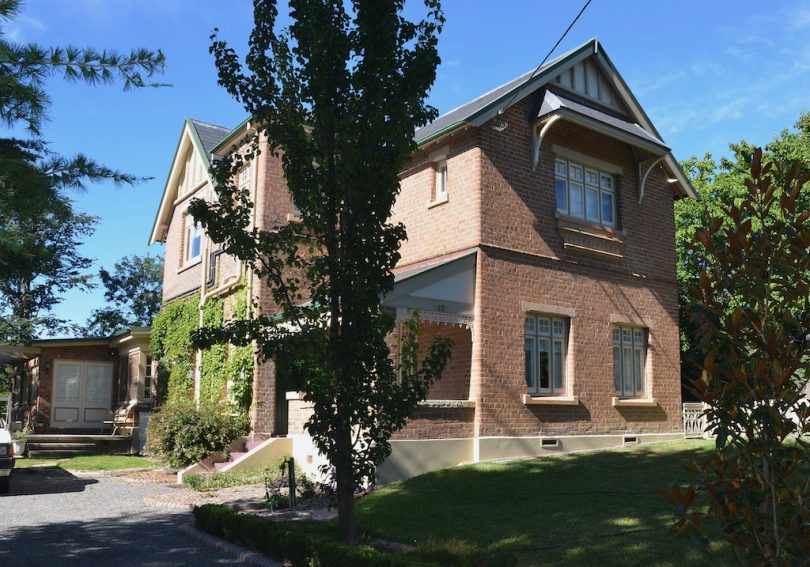
The restored home at 12 Hurst Street in Goulburn today. Photo: Leon Oberg.
The homes have held their charm during the decades, as photos in 1982 by architect David Flannery, and current photos by author and photographer Leon Oberg show.
When real estate principal Ray Croker and his family bought 44 Montague Street in 2007, they took out the inground swimming pool which had not been used for years. Previously, for about 20 years, it had been run as a respite home for former Kenmore Hospital residents. Before that, it was the family home of a teacher from Goulburn College of Advanced Education.
Sitting on the corner verandah in winter, after the surrounding trees drop their leaves, the view reveals the Cookbundoon Ranges in the north. In the more immediate foreground sits St Saviour’s Cathedral, where Manfred had been the 25-year-old clerk of works supervising its completion.
The Crokers love their proximity to the main street, as well as the post office vista from their kitchen window and rose-filled gardens. Rattling trains in the distance on a quiet night are restful.
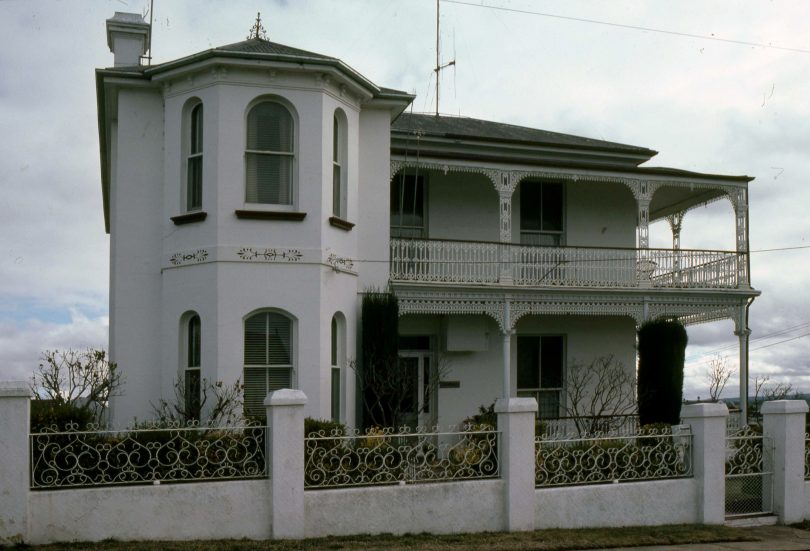
This home at 144 Cowper Street in Goulburn was built in 1882 and photographed in 1982. Photo: David Flannery.
Years ago, while researching Manfred, Linda Cooper discovered a curious thing about 44 Montague Street’s name, ‘Brantingham’. The name previously adorned a home in Victoria Street belonging to former Evening Penny Post editor TJ Hebblewhite. In later years, this home become a group home for Kenmore Hospital, and when the residents left and moved to 44 Montague Street, supervisors brought the sign with them. It has remained there ever since. The home’s original name is ‘Yurabi’.
After years in a stable at ‘Rossneath’ in Bradley Street, Manfred’s documents were donated to the Goulburn and District Historical Society in 1963.
Years later, Ms Cooper, Daphne Penalver and Lynette Miller, along with other society volunteers, renumbered entries. Archivist Gordon Thompson photographed the drawings.
Ms Cooper and Ms Penalver produced two booklets in 2012 chronicling Manfred’s work, presented as a guide for a walking tour. The Church Hill Walk and West End Walk each take about an hour and reveal an exciting era that has turned full cycle once more. The women will deliver a talk on Manfred next month in Canberra for Friends of the National Library.
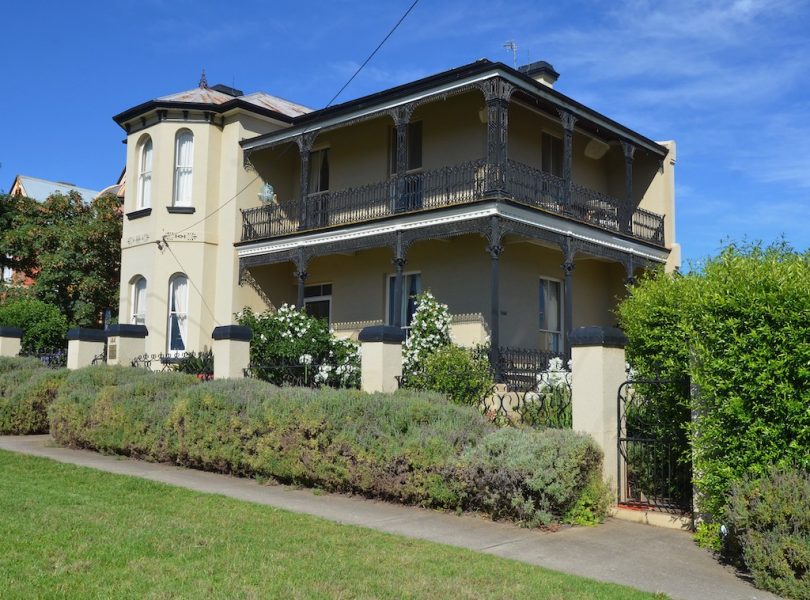
The home at 144 Cowper Street in Goulburn today. Photo: Leon Oberg.
Original Article published by John Thistleton on The RiotACT.






